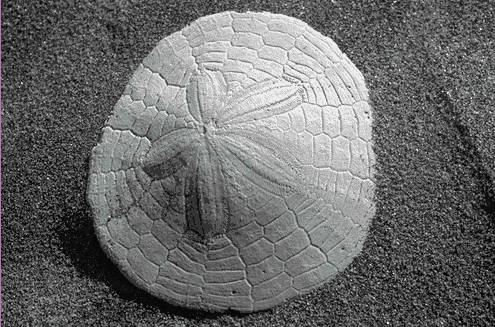Introduction to the Echinodermata
. . . from starfish to sea cucumbers. . .


A nyone who has been to the beach has probably seen starfish or sand dollars. The more intrepid beachcomber may find brittle stars, sea cucumbers, or sea urchins. These and many other organisms, living and extinct, make up the Echinodermata, the largest phylum to lack any freshwater or land representatives.
Most living echinoderms, like this sand dollar from Baja California, are pentameral; that is, they have fivefold symmetry, with rays or arms in fives or multiples of five. However, a number of fossil echinoderms were not pentameral at all, and some had downright bizarre shapes. Echinoderms have a system of internal water-filled canals, which in many echinoderms form suckered "tube feet", with which the animal may move or grip objects.
Click on the buttons below to find out more about the Echinodermata
Visit the Echinoderm Homepage at the California Academy of Sciences for additional information and links. Or peruse the Echinoderm Newsletter, brought to you by the National Museum of Natural History.


